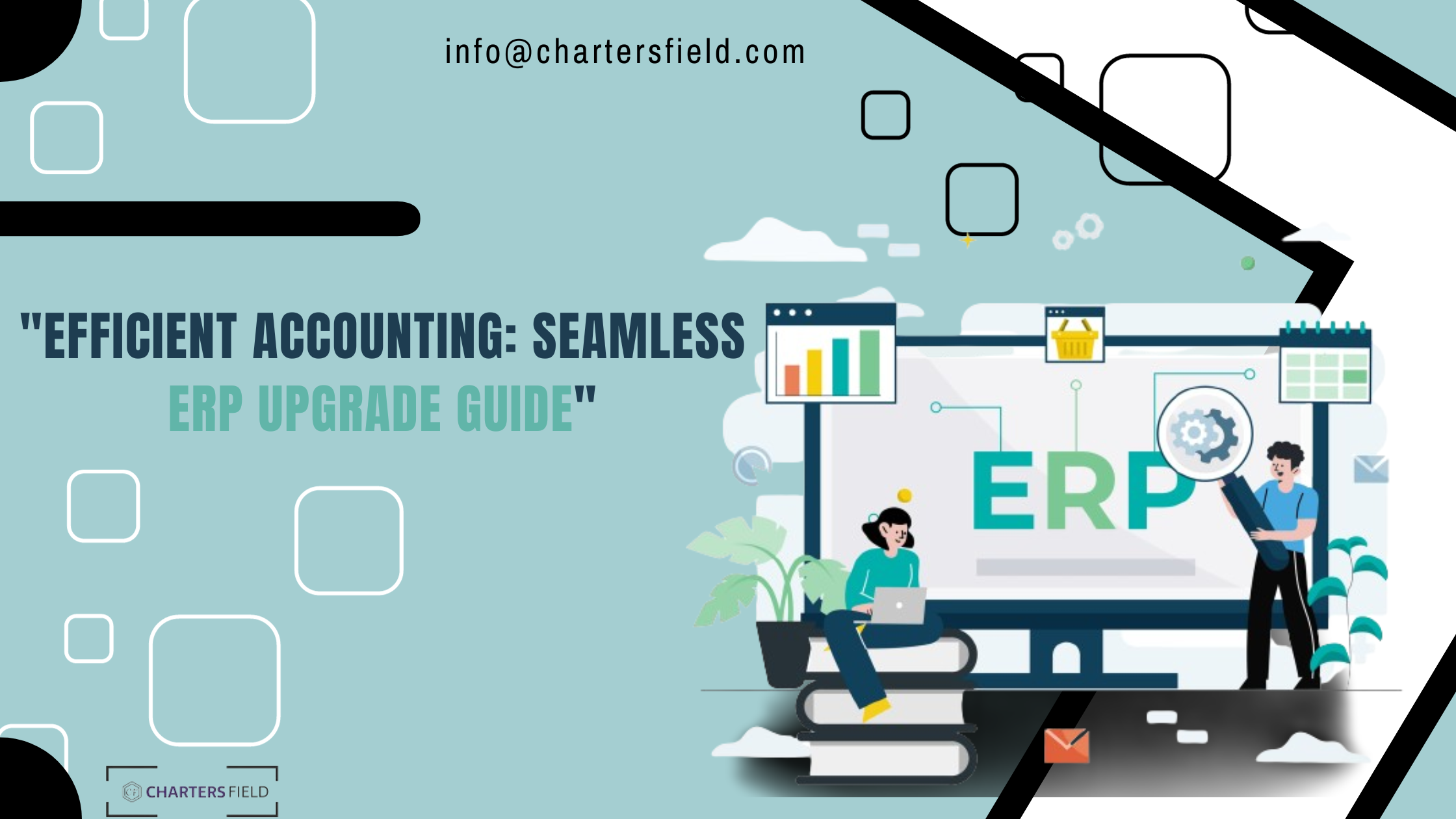Introduction:
In today’s dynamic business landscape, staying competitive demands an embrace of technological progress. The heart of operational efficiency lies in your accounting system, making an upgrade to your ERP (Enterprise Resource Planning) software a prudent choice. This guide aims to lead you through crucial steps, offering insights to facilitate a smooth transition and unleash the full potential of your accounting processes.
1: Recognizing the Need for ERP Upgrade
Understanding the imperative for an upgrade is the initial step. Delve into challenges within your current accounting system, such as outdated features or compliance concerns. Pinpointing these challenges clarifies the aspects of your ERP that require enhancement.
2: Evaluating Your Current Accounting System
Conducting a comprehensive evaluation of your existing ERP system is essential. Scrutinize its strengths, weaknesses, and any customizations. This insight forms the basis for a tailored upgrade strategy aligned with your specific business goals.
3: Setting Clear Objectives for Upgrade
Define clear objectives for the ERP upgrade, be they improving data accuracy, enhancing reporting capabilities, or ensuring compliance. Involving key stakeholders ensures a diversity of perspectives, enriching the clarity of your goals.
4: Choosing the Right ERP Software
The selection of the appropriate ERP software is pivotal. Evaluate available options based on your business requirements, budget constraints, and scalability needs. Look for user-friendly interfaces, robust features, and vendors renowned for solid customer support.
5: Planning and Preparation
A well-constructed plan serves as the cornerstone of a successful ERP upgrade. Create a detailed project plan that delineates tasks, timelines, and responsibilities. Ensure that all relevant stakeholders are informed, and provide extensive training to your team to alleviate potential resistance.
6: Data Migration Strategies
Seamless data migration is crucial to preventing disruptions in your accounting processes. Develop a data migration strategy incorporating data cleansing, mapping, and validation procedures. Backing up crucial data mitigates the risk of potential loss during the transition.
7: Testing and Quality Assurance
Prior to full implementation, conduct rigorous testing to identify and address any potential issues. Quality assurance guarantees that the new system functions seamlessly and meets predefined objectives.
8: Team Training
The success of an ERP upgrade extends beyond technology; it hinges on people. Dedicate time to train your team on the new features and functionalities. Foster open communication and provide ongoing support to facilitate a smooth transition.
9: Go-Live and Post-Implementation Support
The critical moment of go-live is accompanied by vigilant monitoring. Be prepared to address any unexpected challenges and establish a robust support system to assist users. Continuous evaluation ensures optimal system performance.
10: Monitoring and Continuous Improvement
Post-implementation, institute a monitoring system to track the performance of the upgraded ERP. Gather feedback from users and stakeholders to identify areas for improvement. Continuous evaluation and refinement guarantee alignment with the dynamic needs of your business.
11: Realizing Business Benefits
As your team adapts to the upgraded ERP system, begin to realize the anticipated benefits. Whether it’s achieving faster transaction processing, improving financial reporting, or enhancing decision-making capabilities, celebrate the positive impact on your business operations. Share success stories to boost morale and cultivate a positive mindset towards technological advancements.
12: Staying Ahead of Technological Trends
Technology is in a perpetual state of evolution. Stay abreast of the latest trends in ERP systems and accounting software. Regularly assess the need for updates, patches, or future upgrades to ensure your system remains at the forefront of innovation.
13: Building a Culture of Innovation
Encourage a culture of innovation within your organization. Foster an environment where team members feel empowered to suggest improvements and adapt to new technologies. An innovative mindset will not only enhance your accounting processes but also contribute to the overall growth and competitiveness of your business.
Conclusion:
Congratulations on successfully navigating the intricate process of upgrading your ERP system for accounting. While the journey may have presented challenges, the rewards in terms of increased efficiency, accuracy, and adaptability are undoubtedly worth the effort. Remember, an optimized accounting system is not just a tool; it’s a strategic asset that positions your business for sustained success in a continually changing business landscape. As you continue to leverage technology to drive your financial processes, remain agile, embrace innovation, and let your upgraded ERP be a catalyst for continued growth and prosperity.
